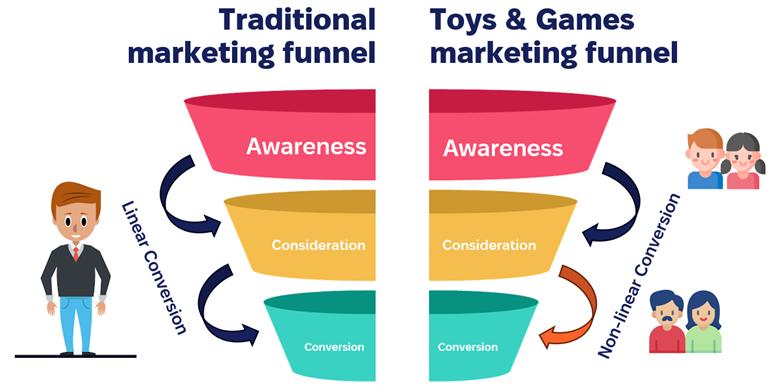
4 minute read
Opinion - Generation Media
The Three Ps of targeting: Be precise, purposeful and prepared to adapt
Clive Green, director of Strategic Planning at Generation Media, explains how having the right targeting strategy in place means media budgets can be much more efficient.

Budgets are under increasing pressure with the rise of media fragmentation and international tariffs, so it’s never been more important to make every penny of marketing budget count. Choices that might have once been instinctive, like who to target and when, now need to be backed by solid data and clear strategy. As media investments face growing scrutiny, some of the most common questions we hear are: where should spend be focused? Should we be targeting parents or children? Prioritising YouTube or TV? Opting for short bursts or always-on campaigns?
There’s no one-size-fits-all answer. Each campaign needs to be assessed individually, depending on KPIs, budget, timing, price point and the product’s key selling points. The best approaches are flexible, responsive and grounded in evidence-based strategies, and most importantly measured through to success.
In toy marketing, the traditional funnel doesn’t apply in the same way it might in other categories. We target children to build awareness and generate desire, while simultaneously targeting parents or gifters to drive consideration and make the final purchase. A campaign that speaks to both audiences, at the right moments and on the right platforms, is more likely to cut through and convert than focusing on a single audience.
To make that happen, strong creative is only part of the equation. Toy companies also need the right tools and insight to reach their desired audiences. At Generation Media, we’ve invested in a robust tech stack that allows us to build investments tailored to how children and parents really engage with content, linking our activity through to business objectives to give marketers the confidence they need in their activity.
For younger audiences, we work with Giraffe Insights using its long-running Kids and the Screen (K.A.T.S) study, which helps us track how media habits shift across platforms and age groups. One of our many innovations is our partnership with Precise TV, co-developing the world’s first child-safe YouTube contextual data management platform (DMP), ensuring we’re delivering scale, precision and compliance all in one.
When targeting parents, there are even more options at our disposal. We use demographic data (like age, gender or income), interest and behavioural targeting for browser and platforms data, or even contextually placed ads next to relevant online content. Where available, first-party data allows us to re-engage existing customers, lookalikes can be used to extend our audiences to likeminded users and retargeting audiences can be created based on engagement with each brand, page, webpage or advertising. Mobile location data lets us target based
on where someone lives, works, shops, or visits and with mobile devices never far from their owners this gives us a truly astonishing amount of data available at our fingertips. Crucially, these capabilities aren’t limited to digital platforms. We can extend these targeting layers to CTV, audio, cinema and even Out of Home, delivering full-funnel campaigns that reach the right audiences from first impression to final purchase and all the marketing objectives in between.
Of course, it’s one thing to have access to these tools, it’s another to know how and when to use them. That’s where we come in. By combining data-driven targeting with real-world insight into how families engage with media, we help brands make smarter decisions, reduce wastage, and get better results. It’s as simple as A, B, C.
Audience – We build audience cohorts from multiple data sources, delving into interest and mobile search to deeply understand our parents, gifters or kidults.
Budget - The platform choice, timings and audience splits will all depend on the money available. Companies don’t need to spend big to make impact but the more investment they have, the more they can do.
Campaign effectiveness – A campaign doesn’t work if it can’t be matched back to real world goals, be that brand perception, increased awareness or sales. Goals should be set at the start of the campaign and a testing framework agreed to prove and improve successes campaign in campaign.
The challenge ahead is clear: be precise be purposeful and be prepared to adapt. With the right targeting strategy in place, a media budget doesn’t just go further, it works harder. To find out how to make your budgets work harder this year, get in touch at contact@generationmedia.co.uk










